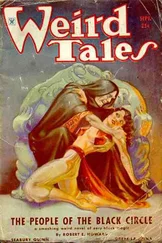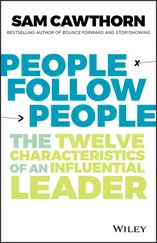Howard Zinn - A People
Здесь есть возможность читать онлайн «Howard Zinn - A People» весь текст электронной книги совершенно бесплатно (целиком полную версию без сокращений). В некоторых случаях можно слушать аудио, скачать через торрент в формате fb2 и присутствует краткое содержание. Издательство: Harper-Collins, Жанр: Фэнтези, на английском языке. Описание произведения, (предисловие) а так же отзывы посетителей доступны на портале библиотеки ЛибКат.
- Название:A People
- Автор:
- Издательство:Harper-Collins
- Жанр:
- Год:неизвестен
- ISBN:нет данных
- Рейтинг книги:4 / 5. Голосов: 1
-
Избранное:Добавить в избранное
- Отзывы:
-
Ваша оценка:
- 80
- 1
- 2
- 3
- 4
- 5
A People: краткое содержание, описание и аннотация
Предлагаем к чтению аннотацию, описание, краткое содержание или предисловие (зависит от того, что написал сам автор книги «A People»). Если вы не нашли необходимую информацию о книге — напишите в комментариях, мы постараемся отыскать её.
A People — читать онлайн бесплатно полную книгу (весь текст) целиком
Ниже представлен текст книги, разбитый по страницам. Система сохранения места последней прочитанной страницы, позволяет с удобством читать онлайн бесплатно книгу «A People», без необходимости каждый раз заново искать на чём Вы остановились. Поставьте закладку, и сможете в любой момент перейти на страницу, на которой закончили чтение.
Интервал:
Закладка:
This unequal treatment, this developing combination of contempt and oppression, feeling and action, which we call "racism"-was this the result of a «natural» antipathy of white against black? The question is important, not just as a matter of historical accuracy, but because any emphasis on «natural» racism lightens the responsibility of the social system. If racism can't be shown to be natural, then it is the result of certain conditions, and we are impelled to eliminate those conditions.
We have no way of testing the behavior of whites and blacks toward one another under favorable conditions-with no history of subordination, no money incentive for exploitation and enslavement, no desperation for survival requiring forced labor. All the conditions for black and white in seventeenth-century America were the opposite of that, all powerfully directed toward antagonism and mistreatment. Under such conditions even the slightest display of humanity between the races might be considered evidence of a basic human drive toward community.
Sometimes it is noted that, even before 1600, when the slave trade had just begun, before Africans were stamped by it-literally and symbolically-the color black was distasteful. In England, before 1600, it meant, according to the Oxford English Dictionary: "Deeply stained with dirt; soiled, dirty, foul. Having dark or deadly purposes, malignant; pertaining to or involving death, deadly; baneful, disastrous, sinister. Foul, iniquitous, atrocious, horribly wicked. Indicating disgrace, censure, liability to punishment, etc." And Elizabethan poetry often used the color white in connection with beauty.
It may be that, in the absence of any other overriding factor, darkness and blackness, associated with night and unknown, would take on those meanings. But the presence of another human being is a powerful fact, and the conditions of that presence are crucial in determining whether an initial prejudice, against a mere color, divorced from humankind, is turned into brutality and hatred.
In spite of such preconceptions about blackness, in spite of special subordination of blacks in the Americas in the seventeenth century, there is evidence that where whites and blacks found themselves with common problems, common work, common enemy in their master, they behaved toward one another as equals. As one scholar of slavery, Kenneth Stampp, has put it, Negro and white servants of the seventeenth century were "remarkably unconcerned about the visible physical differences."
Black and white worked together, fraternized together. The very fact that laws had to be passed after a while to forbid such relations indicates the strength of that tendency. In 1661 a law was passed in Virginia that "in case any English servant shall run away in company of any Negroes" he would have to give special service for extra years to the master of the runaway Negro. In 1691, Virginia provided for the banishment of any "white man or woman being free who shall intermarry with a negro, mulatoo, or Indian man or woman bond or free."
There is an enormous difference between a feeling of racial strangeness, perhaps fear, and the mass enslavement of millions of black people that took place in the Americas. The transition from one to the other cannot be explained easily by «natural» tendencies. It is not hard to understand as the outcome of historical conditions.
Slavery grew as the plantation system grew. The reason is easily traceable to something other than natural racial repugnance: the number of arriving whites, whether free or indentured servants (under four to seven years contract), was not enough to meet the need of the plantations. By 1700, in Virginia, there were 6,000 slaves, one-twelfth of the population. By 1763, there were 170,000 slaves, about half the population.
Blacks were easier to enslave than whites or Indians. But they were still not easy to enslave. From the beginning, the imported black men and women resisted their enslavement. Ultimately their resistance was controlled, and slavery was established for 3 million blacks in the South. Still, under the most difficult conditions, under pain of mutilation and death, throughout their two hundred years of enslavement in North America, these Afro-Americans continued to rebel. Only occasionally was there an organized insurrection. More often they showed their refusal to submit by running away. Even more often, they engaged in sabotage, slowdowns, and subtle forms of resistance which asserted, if only to themselves and their brothers and sisters, their dignity as human beings.
The refusal began in Africa. One slave trader reported that Negroes were "so wilful and loth to leave their own country, that they have often leap'd out of the canoes, boat and ship into the sea, and kept under water til they were drowned."
When the very first black slaves were brought into Hispaniola in 1503, the Spanish governor of Hispaniola complained to the Spanish court that fugitive Negro slaves were teaching disobedience to the Indians. In the 1520s and 1530s, there were slave revolts in Hispaniola, Puerto Rico, Santa Marta, and what is now Panama. Shortly after those rebellions, the Spanish established a special police for chasing fugitive slaves.
A Virginia statute of 1669 referred to "the obstinacy of many of them," and in 1680 the Assembly took note of slave meetings "under the pretense of feasts and brawls" which they considered of "dangerous consequence." In 1687, in the colony's Northern Neck, a plot was discovered in which slaves planned to kill all the whites in the area and escape during a mass funeral.
Gerald Mullin, who studied slave resistance in eighteenth-century Virginia in his work Flight and Rebellion , reports:
The available sources on slavery in 18th-century Virginia — plantation and county records, the newspaper advertisements for runaways-describe rebellious slaves and few others. The slaves described were lazy and thieving; they feigned illnesses, destroyed crops, stores, tools, and sometimes attacked or killed overseers. They operated blackmarkets in stolen goods. Runaways were defined as various types, they were truants (who usually returned voluntarily), «outlaws»… and slaves who were actually fugitives: men who visited relatives, went to town to pass as free, or tried to escape slavery completely, either by boarding ships and leaving the colony, or banding together in cooperative efforts to establish villages or hide-outs in the frontier. The commitment of another type of rebellious slave was total; these men became killers, arsonists, and insurrectionists.
Slaves recently from Africa, still holding on to the heritage of their communal society, would run away in groups and try to establish villages of runaways out in the wilderness, on the frontier. Slaves born in America, on the other hand, were more likely to run off alone, and, with the skills they had learned on the plantation, try to pass as free men.
In the colonial papers of England, a 1729 report from the lieutenant governor of Virginia to the British Board of Trade tells how "a number of Negroes, about fifteen… formed a design to withdraw from their Master and to fix themselves in the fastnesses of the neighboring Mountains. They had found means to get into their possession some Arms and Ammunition, and they took along with them some Provisions, their Cloths, bedding and working Tools… Tho' this attempt has happily been defeated, it ought nevertheless to awaken us into some effectual measures…"
Slavery was immensely profitable to some masters. James Madison told a British visitor shortly after the American Revolution that he could make $257 on every Negro in a year, and spend only $12 or $13 on his keep. Another viewpoint was of slaveowner Landon Carter, writing about fifty years earlier, complaining that his slaves so neglected their work and were so uncooperative ("either cannot or will not work") that he began to wonder if keeping them was worthwhile.
Читать дальшеИнтервал:
Закладка:
Похожие книги на «A People»
Представляем Вашему вниманию похожие книги на «A People» списком для выбора. Мы отобрали схожую по названию и смыслу литературу в надежде предоставить читателям больше вариантов отыскать новые, интересные, ещё непрочитанные произведения.
Обсуждение, отзывы о книге «A People» и просто собственные мнения читателей. Оставьте ваши комментарии, напишите, что Вы думаете о произведении, его смысле или главных героях. Укажите что конкретно понравилось, а что нет, и почему Вы так считаете.












